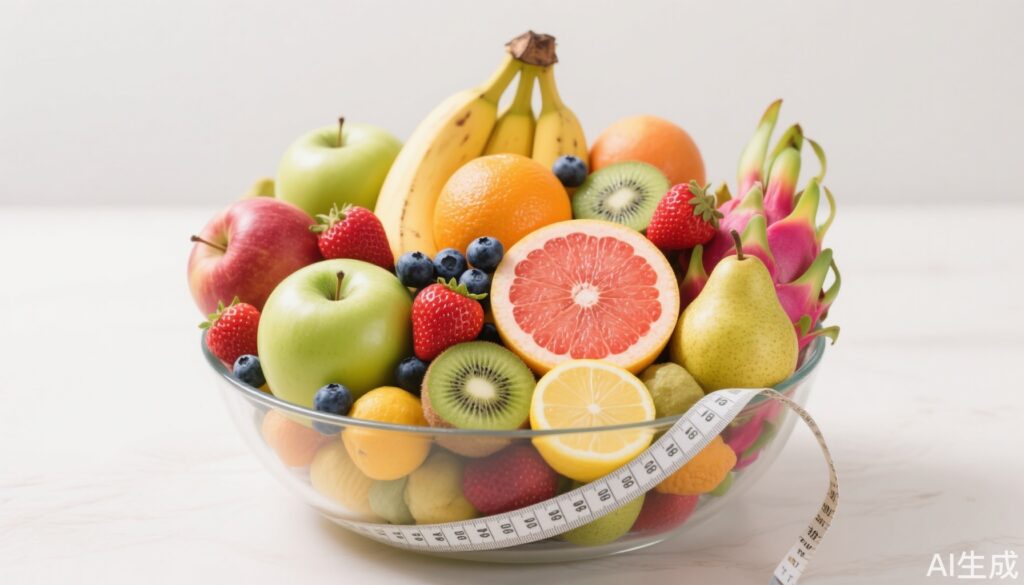Introduction: Can Fruit Really Help You Lose Fat?
Fruits are nature’s original health food—delicious, packed with vitamins, minerals, and fiber. But when it comes to weight loss, not all fruits are created equal. Some are high in natural sugars and calories, while others can be powerful allies in fat reduction. With social media and health forums buzzing about the best fruits for weight loss, it’s time to separate fact from fad. This article reviews the top ten universally recognized fat-loss fruits, the science behind their benefits, common misconceptions, and expert recommendations on how to enjoy these fruits as part of a healthy, balanced diet.
The Science Behind Fat-Loss Fruits
Recent studies support that diets rich in fruits are linked with lower body weight and reduced risk for chronic diseases. The key? Fiber, water content, and specific bioactive compounds that may help regulate appetite, blood sugar, and fat metabolism. Here’s a closer look at the top contenders:
| Fruit | Calories (per 100g) | Key Benefits |
|---|---|---|
| Apple | 53 kcal | High in pectin fiber, increases satiety, supports gut health |
| Banana | 93 kcal | Resistant starch, aids fullness, mood support via tryptophan |
| Orange | 48 kcal | Vitamin C, pectin, antioxidants, cholesterol-lowering |
| Grapefruit | 42 kcal | Naringin (antioxidant), may boost metabolism, appetite control |
| Strawberry | 32 kcal | High in vitamin C and fiber, powerful antioxidants |
| Blueberry | 57 kcal | Anthocyanins, fiber, heart and gut health |
| Kiwi | 61 kcal | Vitamin C, K, fiber, supports digestion |
| Lemon | 35 kcal | Citrus acid, metabolism support, enhances flavor |
| Pear | 51 kcal | Hydration, fiber, gentle on digestion |
| Dragon Fruit | 55 kcal | Fiber, antioxidants (betalains), aids motility |
Case Vignette: Jane’s Fruit-Fueled Weight Loss Journey
Jane, a 34-year-old marketing manager, struggled with late-night cravings and yo-yo dieting. After consulting her registered dietitian, she swapped processed snacks for fruits like apples, grapefruit, and berries. Within three months, Jane lost 8 pounds—without feeling deprived. “The fiber kept me full, and the natural sweetness curbed my sugar cravings,” Jane says. Her story echoes research: A 2021 review in *Nutrients* found that increased fruit intake is consistently associated with weight loss when replacing higher-calorie foods (Slavin & Lloyd, 2012).
Common Misconceptions: Are All Fruits Created Equal for Weight Loss?
One of the biggest myths is that all fruits are equally good for fat loss. While fruits are nutritious, their sugar content and calorie density vary. For instance, grapes and mangoes are healthy but higher in sugars, making portion control important. Another myth is that fruit sugars (fructose) are bad for you; in reality, whole fruit’s fiber slows sugar absorption, minimizing blood sugar spikes. Overeating even low-calorie fruit can still impede weight loss, as overall calorie balance matters most.
Smart Ways to Eat Fruit for Fat Loss
– **Portion Control:** Even low-calorie fruits add up. A palm-sized serving per meal is a good rule of thumb.
– **Pair with Protein or Healthy Fat:** Combine fruits with yogurt, nuts, or cottage cheese to further boost satiety.
– **Choose Whole Over Juiced:** Whole fruits contain more fiber and are more filling than juices.
– **Use as a Snack or Dessert:** Replace sugary desserts with berries or citrus slices for a sweet, satisfying end to meals.
– **Seasonal Variety:** Rotate fruits to enjoy different nutrients and flavors throughout the year.
Expert Insights
Dr. Susan Roberts, professor of nutrition at Tufts University, explains: “Fruits like apples, grapefruit, and berries are particularly effective for weight management. Their high fiber and water content can help people feel fuller on fewer calories, aiding sustainable fat loss.”
Registered dietitian Emily Nguyen notes, “Incorporating 1-2 servings of fruit per meal is generally safe for most people, even for those with prediabetes, as long as it’s balanced with vegetables and lean proteins.”
Potential Pitfalls: When Fruit Isn’t Enough
While fruit supports fat loss, it’s not a magic bullet. Relying on fruit alone, or eating it in unlimited quantities, won’t guarantee results. Weight loss also depends on total caloric intake, physical activity, and other lifestyle factors. People with certain health conditions (like diabetes) should consult their doctor about optimal fruit choices and serving sizes.
Summary Table: Top 10 Fat-Loss Fruits at a Glance
| Fruit | Calories (per 100g) | Best Time to Eat |
|---|---|---|
| Apple | 53 kcal | Breakfast, snack |
| Banana | 93 kcal | Pre-workout |
| Orange | 48 kcal | Anytime |
| Grapefruit | 42 kcal | Morning |
| Strawberry | 32 kcal | Dessert, snack |
| Blueberry | 57 kcal | Breakfast, salad |
| Kiwi | 61 kcal | Snack, salad |
| Lemon | 35 kcal | Flavoring, drinks |
| Pear | 51 kcal | Snack |
| Dragon Fruit | 55 kcal | Anytime |
Conclusion: Fruits as Partners in Fat Loss
Fruits can be powerful, delicious allies in your fat loss journey—when enjoyed wisely. Choose low-calorie, high-fiber options, mind your portions, and pair fruits with balanced meals. The best results come from a holistic approach: regular exercise, mindful eating, and a sustainable, varied diet. Remember, it’s not about restriction, but about making smart, satisfying choices.
References
– Slavin JL, Lloyd B. Health Benefits of Fruits and Vegetables. *Adv Nutr*. 2012;3(4):506-516. doi:10.3945/an.112.002154
– Ledoux TA, Hingle MD, Baranowski T. Relationship of fruit and vegetable intake with adiposity: a systematic review. *Obes Rev*. 2011;12(5):e143-e150. doi:10.1111/j.1467-789X.2010.00786.x
– Wang X, Ouyang Y, Liu J, Zhu M, Zhao G, Bao W, Hu FB. Fruit and vegetable consumption and mortality from all causes, cardiovascular disease, and cancer: systematic review and dose-response meta-analysis of prospective cohort studies. *BMJ*. 2014;349:g4490. doi:10.1136/bmj.g4490
– Dreher ML. Whole Fruits and Fruit Fiber Emerging Health Effects. *Nutrients*. 2018;10(12):1833. doi:10.3390/nu10121833



